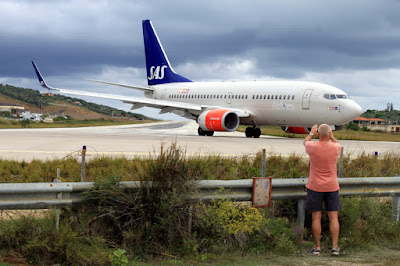I’m not back in the local routine just yet, so here are some new pictures from Skiathos 2015.
Skiathos is not the sort of place where we map out the day ahead; it’s more “jump in the Jimny” to see where it takes you.
Apart from a number of minor roads in pretty poor condition and countless unmade tracks there’s one “major” road which heads across the island in an east/west direction. So we found ourselves heading through Skiathos Town, past the airport en route to Xanemos Beach, the first coffee stop of the day.
Skiathos
Right next to the airport is the lake of Aghios Georgios where herons can sometimes be found. In our case this was Grey Heron, Little Egret and Great White Egret. A bonus was at least 4 Common Kingfishers, a species we would also see later in the week at Strofilia Lake, Koukounaries. As Skiathos is entirely dry during the summer months I could only think the Kingfishers were migrants here to take advantage of the abundant fish in the clear blue waters of this the Aegean Sea.
Aghios Giordios Lake
Great White Egret
Little Egret
Skiathos
The roadside is a plane-spotters delight as a series of aircraft arrive and leave throughout most days during the summer months. The island reverts to quiet mode from October to May when many islanders return to the Greek mainland.
Skiathos Airport
We took a leisurely drive alongside the airport runway abutted by small holdings and agricultural land, much of it devoted to growing fruit and vegetables. The Red-backed Shrike seems commonplace, even abundant on Skiathos in September with between 20 and 30 individuals seen in a typical day of laid back birding. I suspect that many are migrant birds whereby they are invariably found in garden and smallholding situations with often two or more sat along a single perimeter fences or line of vegetation.
Red-backed Shrike
Whinchats were equally abundant along the roadside, indeed almost everywhere we visited throughout our two week stay. The Whinchats are migrant birds only, Skiathos a stop-off on their journey from Northern Europe to Africa. We stopped at a tomato farm to find good numbers of Willow Warblers, Chiffchaffs and unseen but ever chattering Sardinian Warblers.
Whinchat
The beach café was deserted, we the first to arrive. I spotted 6 Eleonora’s Falcons playing over the headland to the right but first we had a date with a reviving drink out of the already blistering heat. In Spain it’s difficult to get a bad cup of coffee. In Skiathos it is the direct opposite - hence the fizzy but thankfully ice-cold lemonade.
Xanemos Beach
Look Out!
Coffee Time - Skiathos
The first planes of the morning began to arrive, speeding in and landing what seemed like just yards behind the café. Yet others motored slowly along the runway, turned the circle and then paused before a mighty blast of jet engines sent them hurtling back down the runway and out over Skiathos Town. In the café the roof and walls shook but luckily the tables were fastened to the floor. Meanwhile the muddy coffee turned darker still following the addition of a dose of sand, grit and unspent jet fuel.
Beach Landing
Take Off - Skiathos
The effect of the first few planes upon the playful Eleonoras seemed quite dramatic. I climbed the hill to get a closer look at the falcons and disturbed a Blue Rock Thrush from I knew not where. The falcons had gone to be replaced by a single Kestrel and several Hooded Crows. It’s just a mile or two from here up the coast to Kastro where the Eleonora’s Falcons have their major, and in September, still active breeding colony. We would see them later in the week.
Eleonora's Falcon
Blue Rock thrush
We drove back through Skiathos Town, Suzuki City as some call it.
Suzuki City
It was lunch time at the Bourtzi and then back to the ranch for a swim and a soak in the sun. But not before we’d stopped to watch a Yellow-legged Gull finishing off an octopus and a European Shag fishing for lunch.
The Bourtzi- Skiathos
European Shag
Yellow-legged Gull
It’s a hard life being a birder in Skiathos. Log in soon for back to normal birding or more from Skiathos.
Linking today to Eileen's Saturday Blog.
Linking today to Eileen's Saturday Blog.




















































































